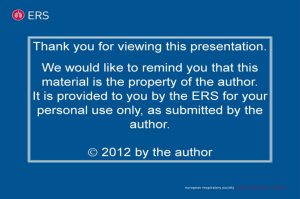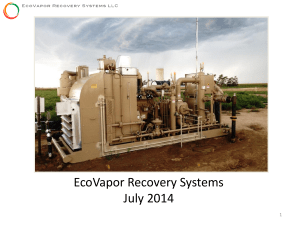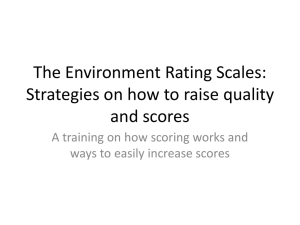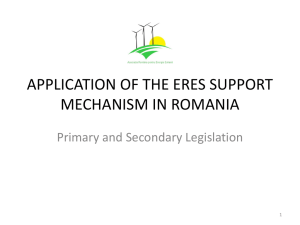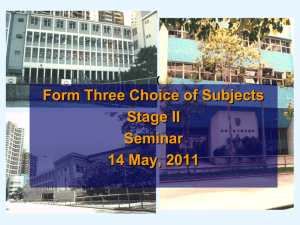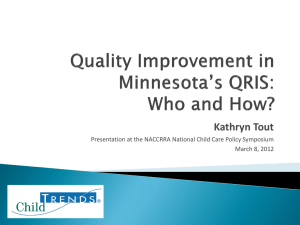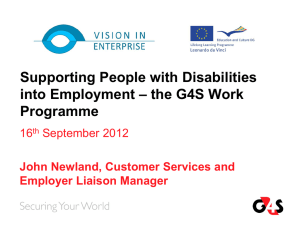Essential Legal Aspects on Energy from
advertisement
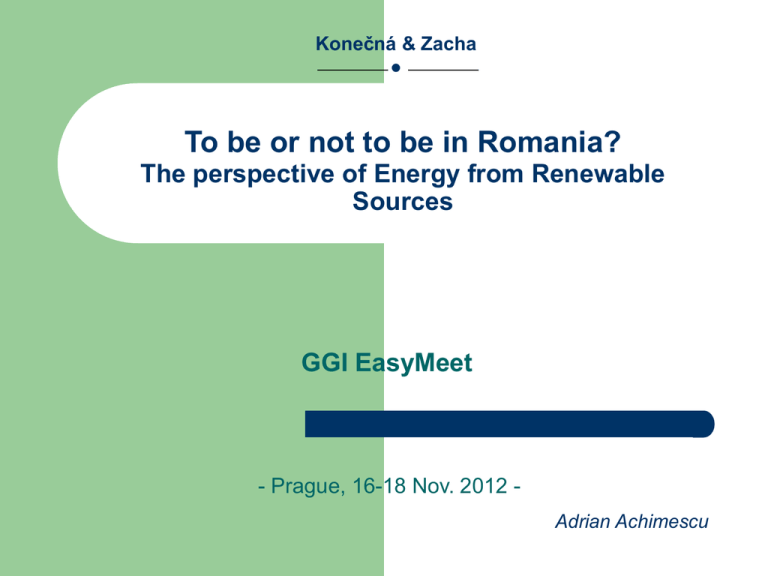
Konečná & Zacha ● To be or not to be in Romania? The perspective of Energy from Renewable Sources GGI EasyMeet - Prague, 16-18 Nov. 2012 Adrian Achimescu 1. Introduction This Presentation provides a general overview of the main rules and principles established by the Romanian legislation in force as at November 15, 2012 in the sector of electric energy from renewable sources (hereinafter referred to as “ERS”). More specifically, this Presentation describes the general legal aspects in relation to the Romanian renewable energy market and the measures undertaken by the Romanian Government and the Romanian Energy Regulatory Authority (hereinafter referred to as “ANRE”) in order to establish a support scheme for the production and sale of ERS. 2. Legal Framework Main Piece of Legislation: Law No. 220/2008 establishing the System for Promotion of Energy From Renewable Sources, in its final version (hereinafter referred to as “Law 220”). Subsequent Legislation: Orders issued by the Romanian Energy Regulatory Authority (hereinafter referred to as “ANRE”) such as: – Order of ANRE No. 42/2011 approving the Regulation for accreditation of ERS producers for application of the green certificates promotion system, as further amended and completed; – Order of ANRE No. 43/2011 approving the Regulation for the issuance of green certificates; – Order of ANRE No. 44/2011 approving the Regulation for organising and functioning of the green certificates market; – Order of ANRE No. 45/2011 approving the Methodology for establishing the yearly quotas of green certificates. 3. Objectives. Energy Quotas Create a coherent system for promotion of the ERS production in Romania. Stimulate private investment in the energy production sector, attracting foreign private investors with ERS expertise in Romania. Meet certain European requirements regarding the quota of ERS within the total quantity of produced and delivered electric energy (33% in 2010, 38% in 2020). Compulsory quotas for ERS which benefits from the green certificates promotion scheme have increasing values starting from 12% in 2012 up to 20% in 2020. 4. Promoted Energy Sources (1) Hydraulic energy – Max. 10MW 3 green certificates/1MW Wind energy 2 green certificates/1MW - 2017 1 green certificate/1MW – 2017 onwards Solar energy 6 green certificates/1MW 4. Promoted Energy Sources (2) Geothermal energy 2 green certificates/1MW Biomass and biogas energy 2 green certificates/1MW Waste gas energy 1 green certificate/1MW Waste waters energy 1 green certificate/1MW 5. Main Principles of the ERS Promotion System Green Certificates: The ERS promotion system established by Law 220 and its subsequent enactments is based on the issuance, for each MWh of ERS produced and delivered to the national electric energy grid, of a certain number of green certificates. Such green certificates are obtained and traded by producers of ERS separately from the produced energy, on a specific market operated by the Romanian Electric Energy Market Operator OPCOM S.A. State Aid: Green certificates are issued by the State as incentives for the development of ERS production plants. For this reason the entire ERS promotion system established by Law 220 was subject to a state aid procedure in front of the European Commission, which issued its final approval in 2011. Purchase of Green Certificates: Based on this support scheme, electric energy suppliers (i.e. entities which provide electric energy to final consumers) have an obligation to acquire green certificates pro rata with the quantities of energy delivered to the final consumers. ERS Incomes: ERS producers generate income from 2 main sources: sale of the produced electric energy on the electric energy market and sale of green certificates on the green certificates market. 6. Timeframe of the Green Certificates Support Scheme Subject Matter: The promotion system in place for the ERS production is applicable to ERS power plants which start operating or which are re-equipped by the end of 2016. Time Limitations: The promotion system shall apply for: – 15 years, for the electric energy produced in new power plants; – 10 years, for the electric energy produced in re-equipped hydroelectric power plants with an installed power of maximum 10 MW; – 7 years, for the electric energy produced in power plants which were already used in the past for the electric energy production on the territory of other states, if used in isolated energetic systems or if they were installed and functioning before the entry into force of Law 220 as republished (i.e. August 16, 2010), provided that the mentioned power plants are not older than 10 years and they fully comply with the legal provisions for environment protection; and – 3 years, for the electric energy produced in hydroelectric power plants with an installed power of maximum 10 MW which have not been re-equipped. 7. Issuance of Green Certificates Energy Sources: Green certificates are issued exclusively to ERS power plants using the renewable energy sources mentioned above. In order for other renewable sources to benefit from such promotion system, another state aid approval procedure shall be carried out in front of the European Commission. Individual Approval: For projects of ERS production plants using the energy sources mentioned above and having a total installed power exceeding 125 MW an individual state aid authorisation needs to be obtained from the European Commission. ERS Subject to Promotion: The number of green certificates granted to ERS producers as mentioned above is calculated based on the total quantity of ERS produced and delivered by one ERS production plant minus the electric energy consumed by the respective ERS production plant for its functioning. Testing Period: For the testing period of the ERS production plant (which mainly depends on the technical requirements of the ERS production plant but usually does not exceeded 6 months) ERS producers shall be granted one green certificate for 1 MWh of produced and delivered energy, irrespective of the ERS technology involved. 8. Overcompensation Notion: Mechanism by which ANRE is authorised to reduce the number of green certificates granted to an ERS producer which benefited from other state subsidies for the respective ERS production plant. Objective: Avoid the cumulating of state support schemes. Calculation: The number of green certificates to be granted to ERS producers subject to overcompensation is established by ANRE on case by case basis at the moment of qualification of the ERS producer for the application of the green certificates promotion system. 9. Sale of the Produced ERS and of the Green Certificates Producers of ERS obtain their revenues from 2 main sources: – the sale of the energy produced on the electric energy market; and – the sale of green certificates on the green certificates market. 9.1 Sale of ERS Energy Market: The ERS is traded freely on the electric energy market operated by OPCOM S.A., in market competition conditions. According to their commercial interests, ERS producers may choose between the following trading platforms: – Day-Ahead Market; – Intra-Day Market; – Centralised Market for Bilateral Contracts (Public Auction Mechanism); – Centralised Market for Bilateral Contracts (Continuous Negotiation Mechanism). Average Prices (approximate values): – Day Ahead Market: Between EUR 40 and EUR 65 per 1MWh – Centralised Market for Bilateral Contracts: EUR 50 per 1 MWh 9.2 Sale of Green Certificates Green Certificates Market: The green certificates are obtained and traded separately from the produced ERS. The producers of ERS and the energy providers are trading the green certificates on the Centralised Green Certificates Market organised and coordinated by the Operator of the Electric Energy Market – OPCOM S.A. in accordance with the ANRE regulations. Price Limitations: For the period between 2008 and 2025, the green certificates value shall range between a minimum of EUR 27 per certificate and a maximum of EUR 55 per certificate, as established by Law 220. However, this value of the green certificates shall be modified yearly on the basis of the average inflation index for December of the previous year calculated at the level of the European Union and officially communicated by EUROSTAT. Market Price: The value of the green certificates established by ANRE for 2012 shall range between the minimum value of EUR 28.172 and the maximum value of EUR 57.389. In October 2012, the average price of green certificates was of EUR 56.16. 10. Current Market Status As a result of the entering into force of the above mentioned enactments, the Romanian market of ERS has become very active and many projects of ERS power plants are currently being developed. According to the statistics of the Romanian Transport and System Operator Transelectrica S.A., ERS power plants totalising approximately 7,000 MW will start operating in the course of 2012. New Projects are expected to generate a slight decrease of the green certificate’s value and also certain grid connection difficulties due to the fact that, in certain regions, the electric energy grid infrastructure needs to be upgraded. Taking into account that the current price of the green certificates is close to the maximum and that, according to ANRE, there are regions in Romania where the existing grid infrastructure is not used at 100% of its capacity, ERS investments in Romania are increasingly attractive for foreign and Romanian investors. 11. Conclusion Profitable Support Scheme (especially PV) Rather complicated to put in practice Very good legal and tax advice is necessary Looking forward to working with you and your clients in Romania THANK YOU!
